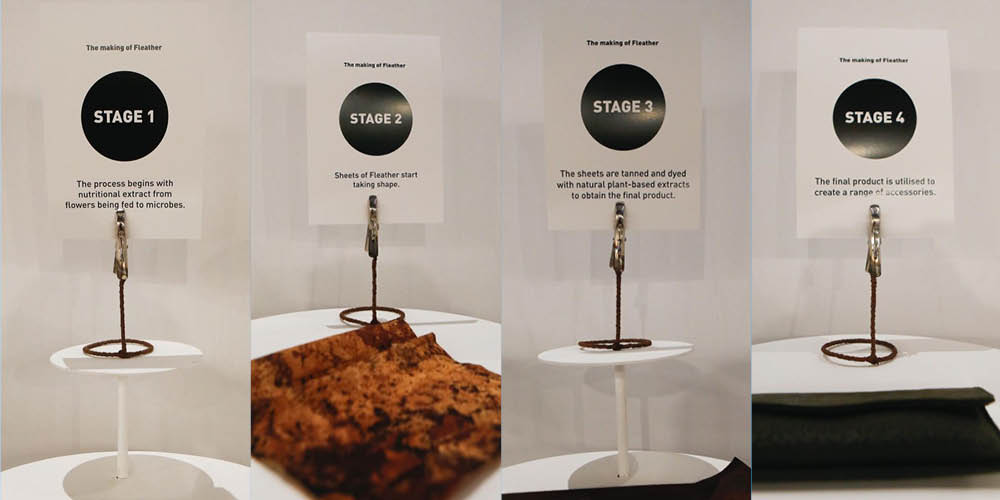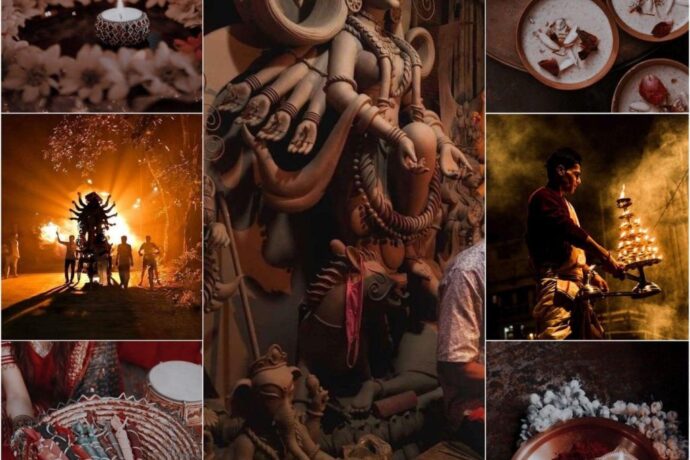As the winter version of the FDCI X Lakmé Fashion Week 2022 has been underway, we, at Her Circle got down to discover style from the lens of sustainability and it’s secure to say we weren’t disillusioned. From the anticipated set of aware collections on the runway to discovering manufacturers which have discovered inventive options to show issues round for style supplies, right here’s all the things aware you have to know, discover and introduce to your wardrobe from the style occasion.
The Impact Hub
One of the highlights of the occasion for us was undoubtedly a particular showcase- the Impact Hub- which helped numerous Indian enterprises showcase methods during which their sustainable merchandise make an enormous distinction.
Part of the Impact Hub was Phool’s eco-pleasant various to leather-based which was fabricated from waste temple flowers in addition to Kirti Poonia’s Relove which is altering the face of second-hand clothes within the Indian market, one Indian label at a time.
Image Source: Instagram/lakmefashionwk
Humanity Centred Designs showcased how their revolutionary round recycling framework helps and helps greater than 150 attire manufacturing MSEs in the direction of sustainable transformation and recycling textile waste.
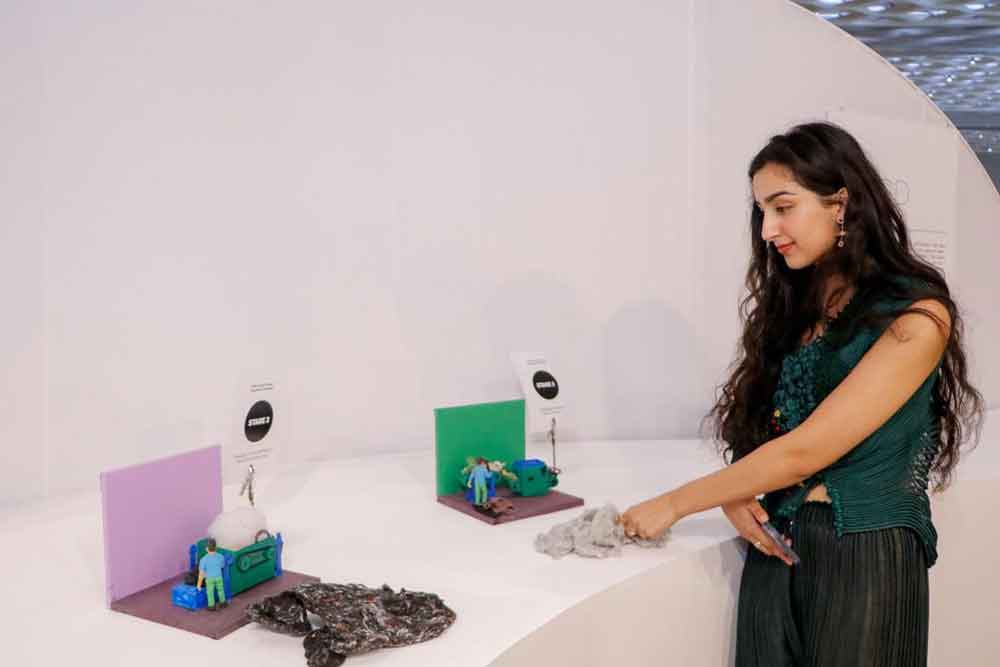
Image Source: Instagram/lakmefashionwk
Craste showcased their one-cease answer for packaging options and furnishings options made by fixing the crop waste administration issues farmers face within the nation. Instead of leaving crop residue and waste to burn, Craste used it to make supplies for packaging and furnishings purposes.

Image Source: Instagram/lakmefashionwk
200 Million Artisans showcased how they work as an ecosystem enabler to catalyse self-reliance and accountable innovation for India’s artisans. They accomplish that by offering entry to data, and sources to empower artisan producers and affect entrepreneurs. Their showcase highlighted how 56 per cent of members within the artisan sector are ladies.
The Woolmark Company’s showcase highlighted how pure supplies like guava leaves, indigo leaves, chaste tree leaves, Indian madder and lots of extra can be utilized to provide pure dyes that may in flip used so as to add color to wool yarns.
Sustainability And Its Different Forms
By now it’s clear that sustainability, each in style and in any other case, is multifaceted. Be it aware practices, environment friendly waste administration or just circularity, we discovered that many homegrown manufacturers had been adapting alternative ways to make a distinction.
The occasion began on Day one with this yr’s Gennext lineup of designers, a class that has given us one in every of India’s most inventive sartorial specialists together with Rahul Mishra, Masaba Gupta,
Ruchika Sachdeva of Bodice and lots of extra. While designers like Somya Goyal design with a trans-seasonal perspective, Stoïque’s intention-based mostly clothes included khadi and naturally dyed clothes. In an analogous style, ‘re-‘ made use of recycled textiles and plant dyes to create a collection of traditional Indian silhouettes, some of which were not only hand embellished but also hand sewn. The brand’s yellow-hued clothes are dyed utilizing waste marigold flowers from the Siddhivinayak Temple in Mumbai, seamlessly including element for higher waste administration to the model story.
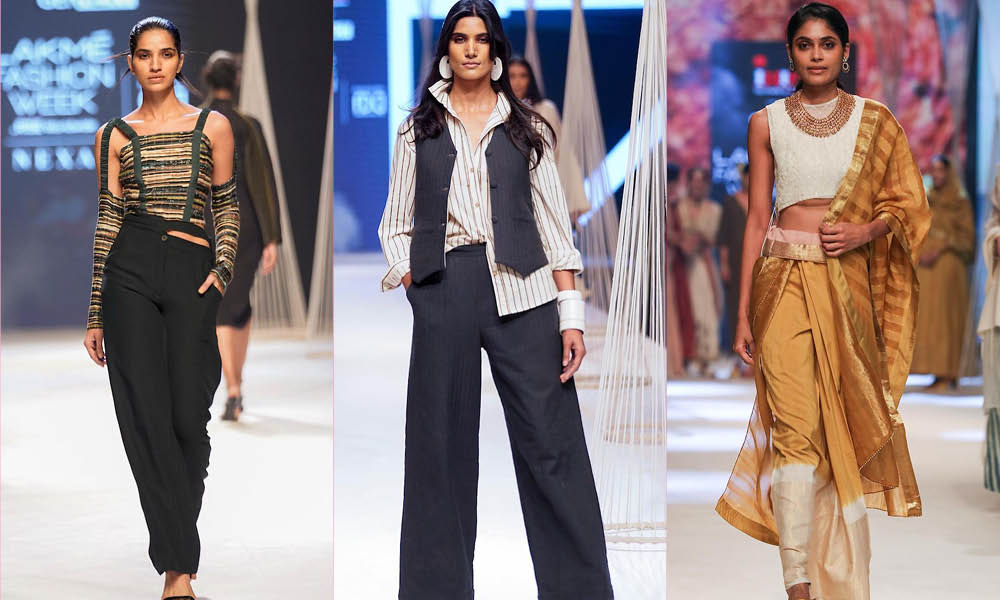
Somya Goyal, Stoïque, re- | Image Source: Instagram/lakmefashionwk
The spotlight for us, nonetheless, was evidently day two or the Sustainable Fashion Day – an entire day of showcases and occasions revolving across the sole function and presence of sustainability in style.
The mixture of handwoven and pure materials like linen, khadi, and cotton combined with hand block prints or pure dyes held a robust presence in exhibits like that of Eka, Diksha Khanna and Swatti Kapoor.
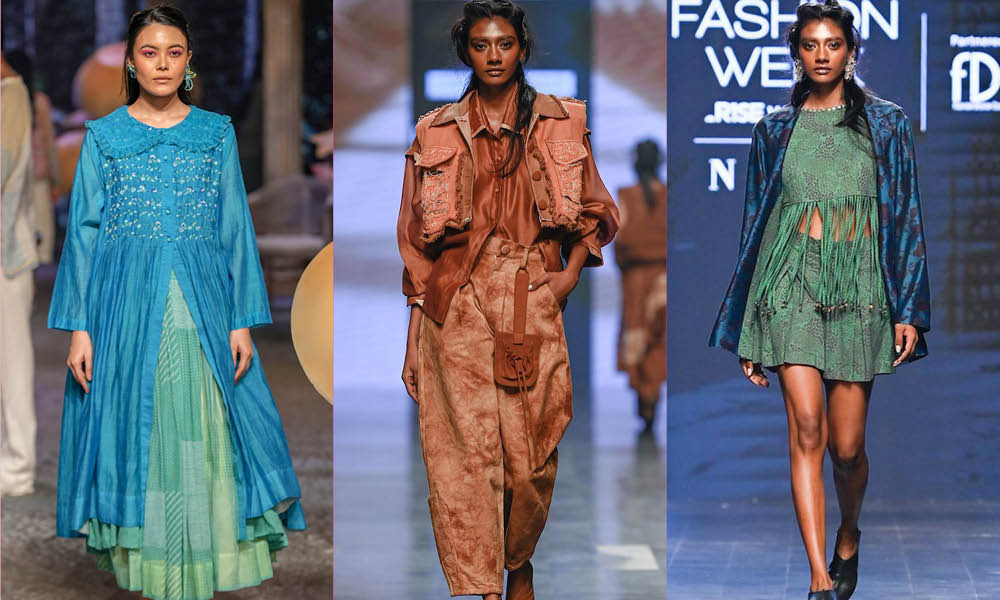
eka, Diksha Khanna, Swatti Kapoor | Image Source: Instagram/lakmefashionwk
While some designers went the pure materials means, the winner of the R|Elan™ Circular Design Challenge in Partnership with United Nations in India, ‘Pieux’ by Pratyush Kumar opted for a extra round path, making use of deconstructed and reconstructed previous garments along with recycled materials like CARTEX (upcycled carpet waste handloom textile), R|Elan™️ Greengold (recycled polyester created from publish-shopper PET Bottles), GRS-licensed recycled Polyester, natural cotton, and so forth. and made for a set of uniquely styled silhouettes.
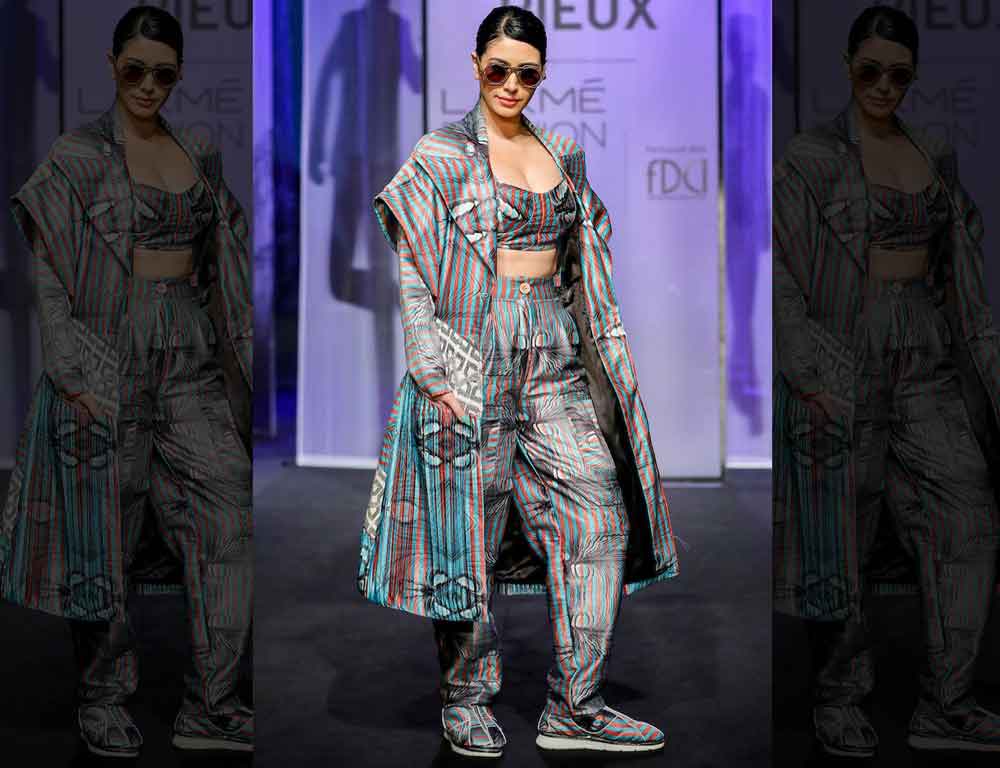
Pieux | Image Source: Instagram/lakmefashionwk
Also taking place the round route was designer duo Gauri & Nainika, who used R|Elan™’s new cloth known as EcoGold which has been bio-enhanced to interrupt down into pure components, serving to lower down style waste in landfills. The assortment, which was a mixture of mild, dreamy florals and glamourous deep hues and silhouettes additionally used the R|Elan™ GreenGold cloth which is created from recycled from PET bottles.

Gauri & Nainika
Designer Anju Modi’s Indian put on assortment additionally used the TENCEL™ lyocell and modal fibers for beautiful conventional drapes, embroidery and deep hues in Indian silhouettes.
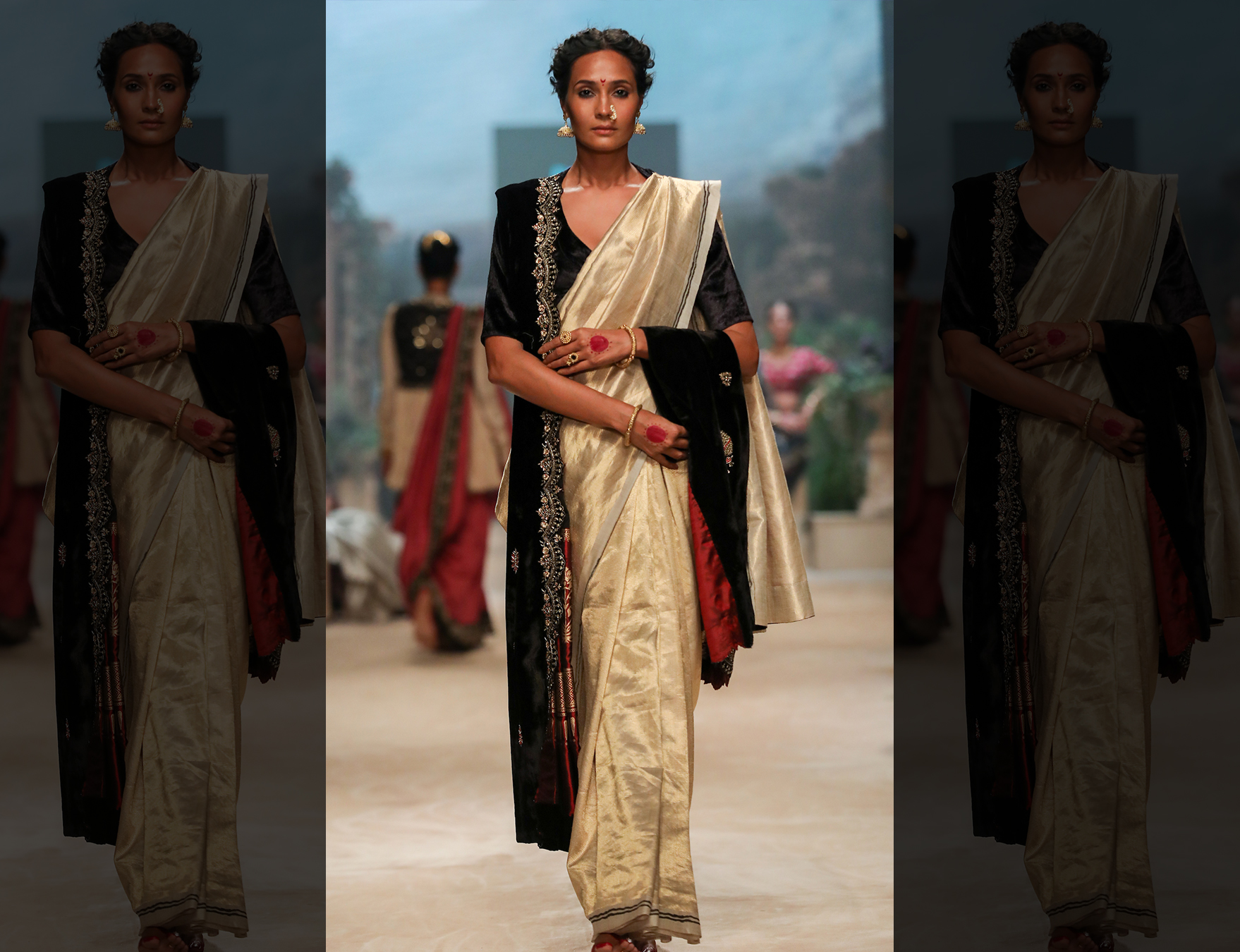
Anju Modi | Image Source: Instagram/lakmefashionwk
Marrying each pure and sustainably made materials collectively in a single assortment was designer duo Abraham & Thakore who used a mixture of natural cotton, habutayi, and mashru silks, lenzing eco Vero, and Tencel for a set of up to date, trendy, and but simplistic items.

Abraham & Thakore
Textile Crafts Given The Centre Stage
While conventional Indian textile crafts have a synonymous presence in Indian style, their use on this season’s runway was a real instance of what Indian shoppers are searching for as we speak – Indian crafts with wearability, up to date aesthetics or contemporary takes.
Designers Saaksha & Kinni’s addition of crafts from the Indian states of Rajasthan and Gujarat to up to date designs was a welcome edge. The use of mirror work and tie and dye with edgy and on a regular basis silhouettes balanced the usage of indigenous crafts with modernity.
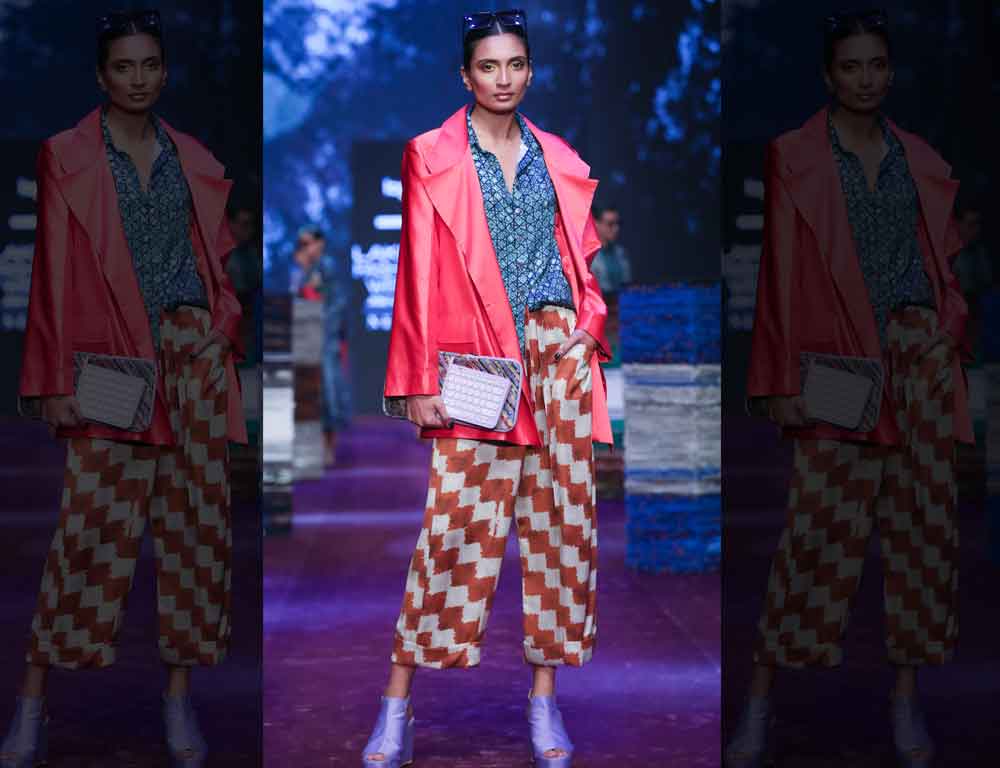
Saaksha & Kinni
In magnificent distinction of aesthetics was designer Gaurang Shah’s assortment which included conventional Indian creations from everywhere in the nation. Shah used silk weaves with Kanjeevaram from the South, Paithani from Maharashtra, brocades from Varanasi in addition to conventional materials like Kota, Uppada, Khadi in addition to muslin. The designer’s use of crafts like Gara, Kasuti, Aari, Chikan, and Kutch in addition to conventional cloth crafts like Bandhani, Shibori, patachitra, kalamkari, and cheriyal work was actually symbolic of the wealthy range of textile crafts our nation possesses, most of which nonetheless stays untapped as an entire.
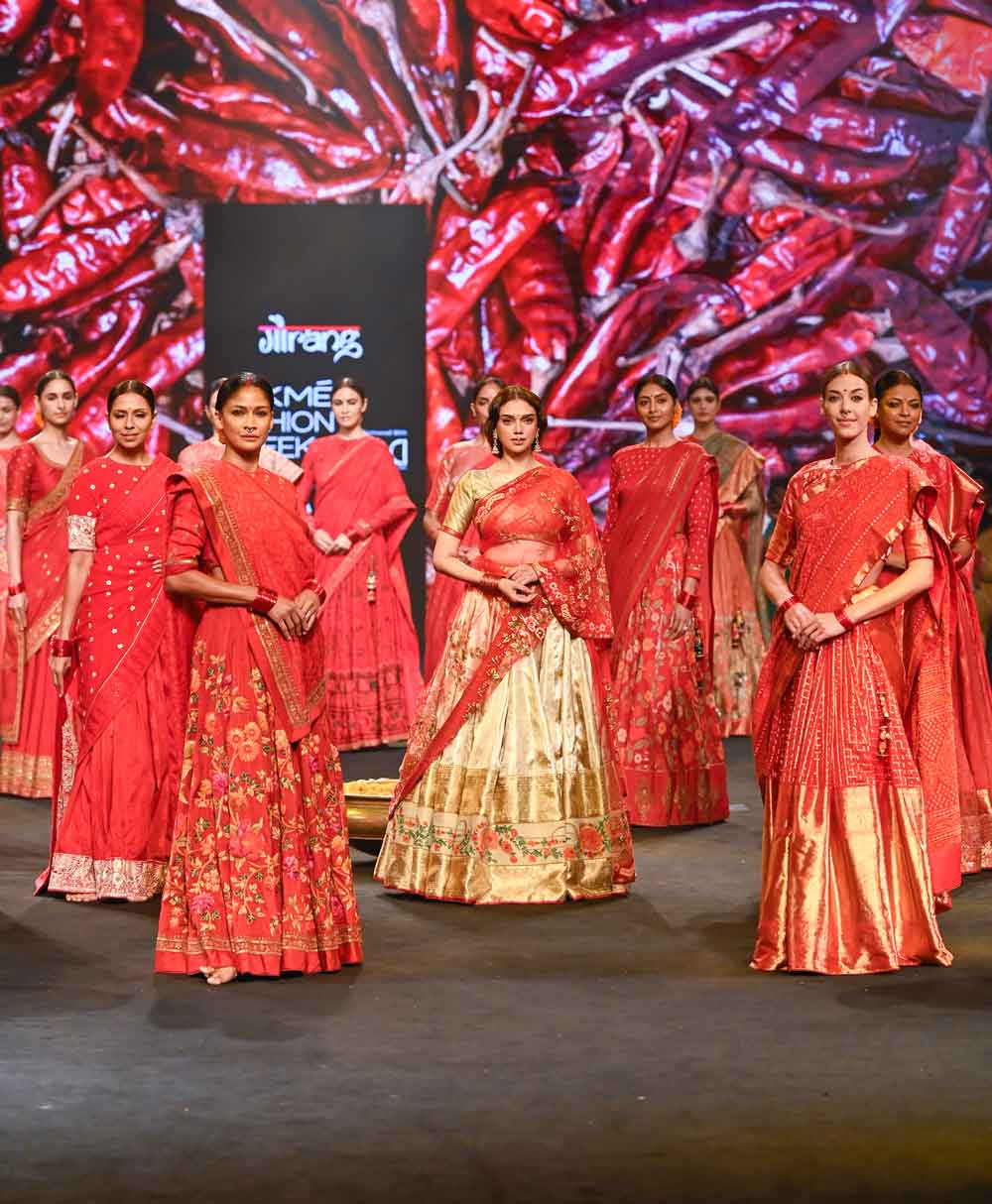
Gaurang Shah
Even as we noticed full collections devoted to sustainability, there have been additionally designers including their very own variations of options to sustainability issues in style. Be it Abhishek Sharma’s use of zero-waste sample making, Aisha Rao’s use of upcycled materials or style model Guapa’s use of sustainable materials, it’s secure to say sustainability has discovered its means into Indian style in a optimistic means.
Women In Sustainable Fashion
An informative panel dialogue on “Fashion, Climate and the Role of Women” on Sustainable Fashion Day efficiently make clear the significance of girls’s roles in sustainable style. The panelists included pioneers in sustainable fashion- Priya Krishnamoorthy – founder and CEO, 200 million Artisans, Anita Dongre – chief inventive officer, House of Anita Dongre and Aditi Mayer – sustainability activist and photojournalist. While Krishnamoorthy make clear statistics from the
Business of Handmade report to focus on how ladies play an vital function within the handmade sector as an entire, Mayer shared perception on the plight of girls, who are sometimes adversely affected by the local weather change disaster. Dongre’s perspective as a designer helped us perceive how one can, as a designer and as a shopper higher produce and purchase, respectively to ensure sustainability is furthered in our on a regular basis wardrobes as properly.
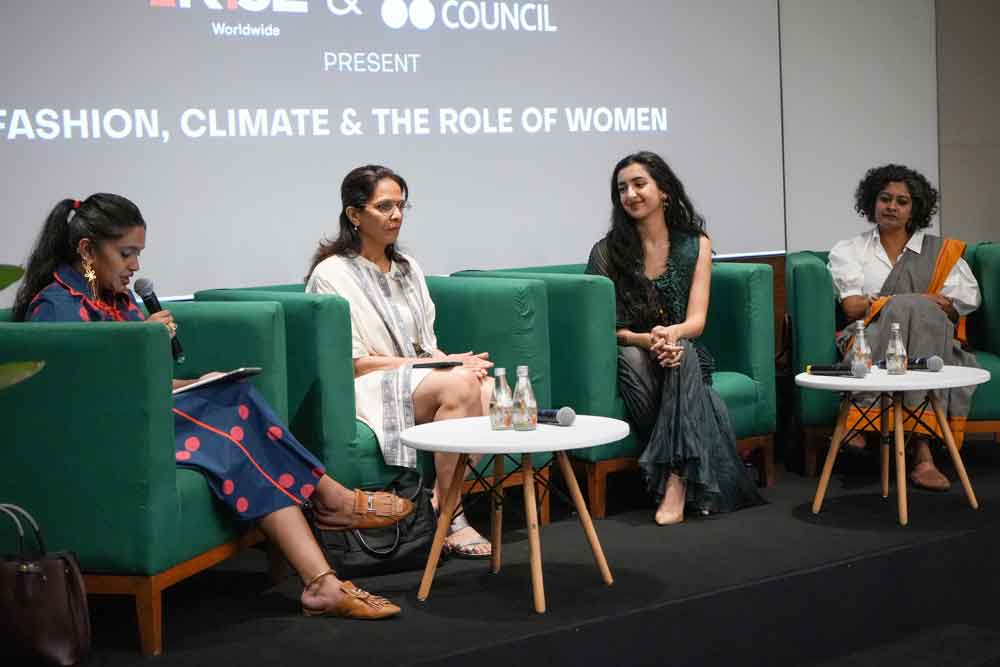
Anita Dongre, Aditi Mayer, Priya Krishnamoorthy
Circularity Practices
While these unimaginable showcases are tremendous vital to focus on sustainability in Indian style, an vital a part of the style financial system is circularity- one other component that passed off of significance on the occasion.
Greensutra’s reside recycling studio on the occasion was set as much as recycle plastic merchandise into equipment like coasters, jewelry, keychains and far more.
Another spotlight was a poll the place you might drop your used invitations, which might go on to be recycled into diaries, an try and go carbon impartial.

